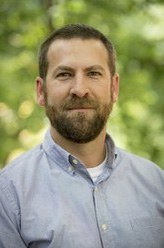Posted: May 16, 2018
This is the 4th of eleven short news articles written by students, during the professional development class. This year we had the students interview their advisor(s), in an effort to help them better understand the larger context of their projects.
Lawn in Order - Special Insects Unit
By Garrett Price
You can't eat it, you can't make anything out of it, and yet turfgrass is estimated to be a $40 billion industry and the number one agricultural commodity of several states. However, an unhealthy dependence on chemicals to control insect pests and a poor understanding of their biology has caused some pests to become resistant to the most common pesticides, making it far more difficult to control them. To combat this growing issue, Ben McGraw, an associate professor at Penn State, has dedicated his lab to better understanding the biology and ecology of turfgrass insect populations.
When protecting a golf course against insect pests, the monetary cost of spraying the entire course is trivial when compared to the risk of not doing so, resulting in many turf managers spraying every surface, every year, regardless of damage or even presence of a pest. Unfortunately, this has led to several turf pests showing an increased tolerance against pesticides. Often the first response of a golf course manager to a pesticide becoming less effective is to increase the rate of the chemical or the frequency of application, compounding the problem. Resistance to the most common and cost-effective pesticides will inevitably lead to the requirement of more expensive and potentially less environmentally safe pesticides to achieve similar levels of control.
McGraw has always been interested in pest management, but especially alternative methods of controls to pesticides. In 2014, he began his lab at Penn State, initially focusing on biological control of turfgrass pests before turning his attention towards the unique challenges caused by chemical control, especially the emergence of insecticide resistance.
One of the main targets of McGraw's research is the annual bluegrass weevil (ABW), a pest of short-cut turfgrass. Damage caused by this pest has been reported as far back as 1931, but much of the research on its biology and population dynamics has only been done in the last 10 years. Previously, golf-course superintendents would spray multiple times to control ABW based on the population and density counts of adults, to little effect. After researching the reproductive phenology of this insect, McGraw found that superintendents could reduce the frequency of insecticide applications. Following this, McGraw has worked towards promoting reduced pesticide usage while more effectively controlling for ABW.
There is a great deal that remains to be learned about the biology of ABW. It is a pest of Northeastern and Mid-Atlantic regions, though its range continues to expand for unknown reasons. No specific natural enemies of ABW have been identified, and it is unclear what its native host even is. Without more information about its biology, non-chemical control of ABW is very challenging.
McGraw hopes that through the research conducted in his lab, he will be able to answer questions about the recent emergence of resistance in ABW and be able to provide knowledge that turf managers will be able to put into practice. Understanding the biology of the pests of turfgrass is critical to being able to effectively control them and keep those putting greens green.


